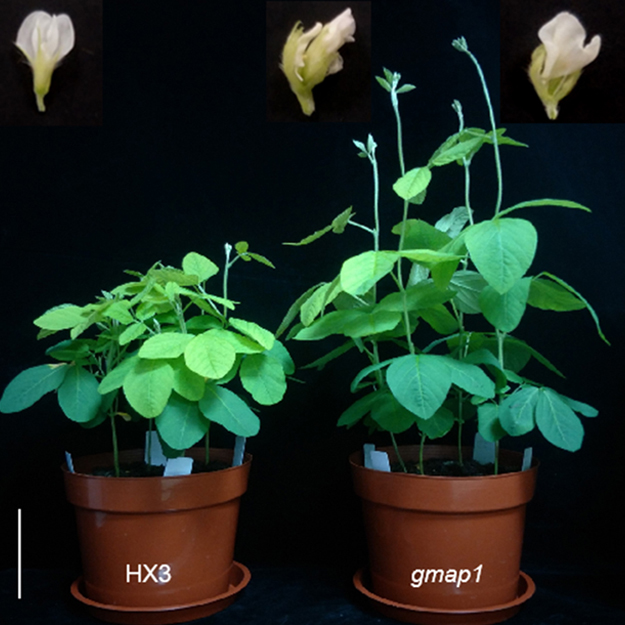

Journal of Integrative Plant Biology >
Soybean AP1 homologs control flowering time and plant height
Received date: 2020-05-11
Accepted date: 2020-07-02
Online published: 2020-07-03
Flowering time and plant height are key agronomic traits that directly affect soybean (Glycine max) yield. APETALA1 (AP1) functions as a class A gene in the ABCE model for floral organ development, helping to specify carpel, stamen, petal, and sepal identities. There are four AP1 homologs in soybean, all of which are mainly expressed in the shoot apex. Here, we used clustered regularly interspaced short palindromic repeats (CRISPR) – CRISPR‐associated protein 9 technology to generate a homozygous quadruple mutant, gmap1, with loss‐of‐function mutations in all four GmAP1 genes. Under short‐day (SD) conditions, the gmap1 quadruple mutant exhibited delayed flowering, changes in flower morphology, and increased node number and internode length, resulting in plants that were taller than the wild type. Conversely, overexpression of GmAP1a resulted in early flowering and reduced plant height compared to the wild type under SD conditions. The gmap1 mutant and the overexpression lines also exhibited altered expression of several genes related to flowering and gibberellic acid metabolism, thereby providing insight into the role of GmAP1 in the regulatory networks controlling flowering time and plant height in soybean. Increased node number is the trait with the most promise for enhancing soybean pod number and grain yield. Therefore, the mutant alleles of the four AP1 homologs described here will be invaluable for molecular breeding of improved soybean yield.

Liyu Chen, Haiyang Nan, Lingping Kong, Lin Yue, Hui Yang, Qingsong Zhao, Chao Fang, Haiyang Li, Qun Cheng, Sijia Lu, Fanjiang Kong, Baohui Liu and Lidong Dong . Soybean AP1 homologs control flowering time and plant height[J]. Journal of Integrative Plant Biology, 2020 , 62(12) : 1868 -1879 . DOI: 10.1111/jipb.12988
/
| 〈 |
|
〉 |